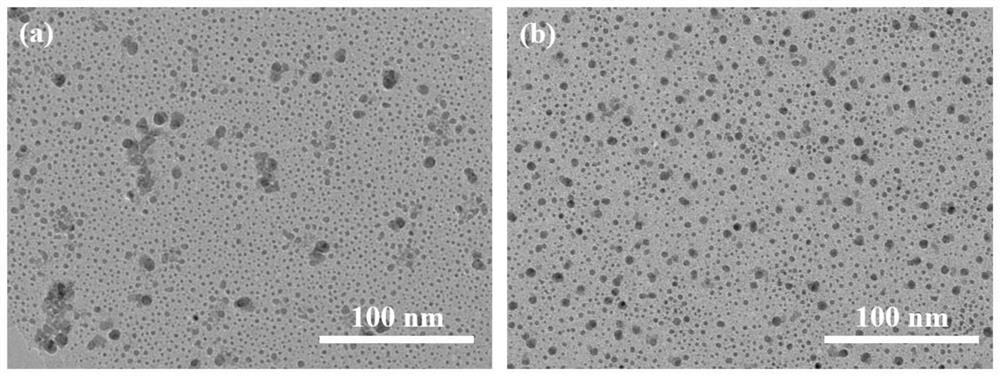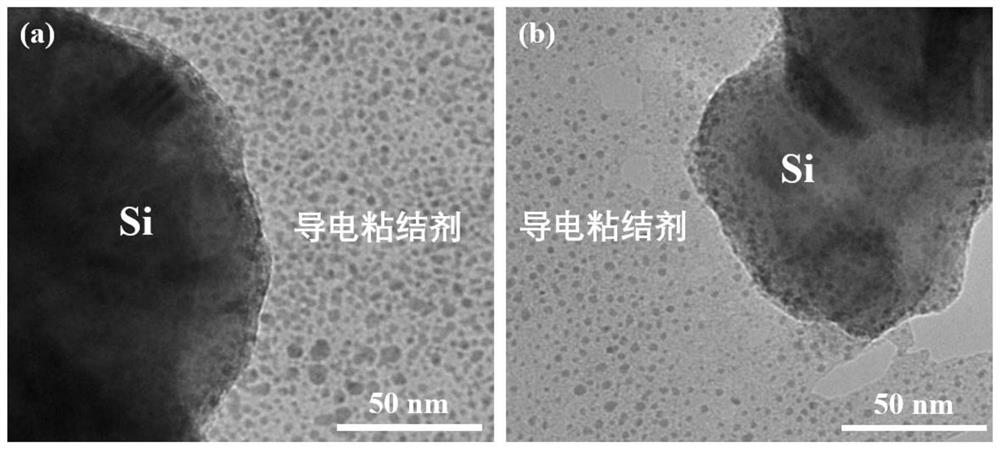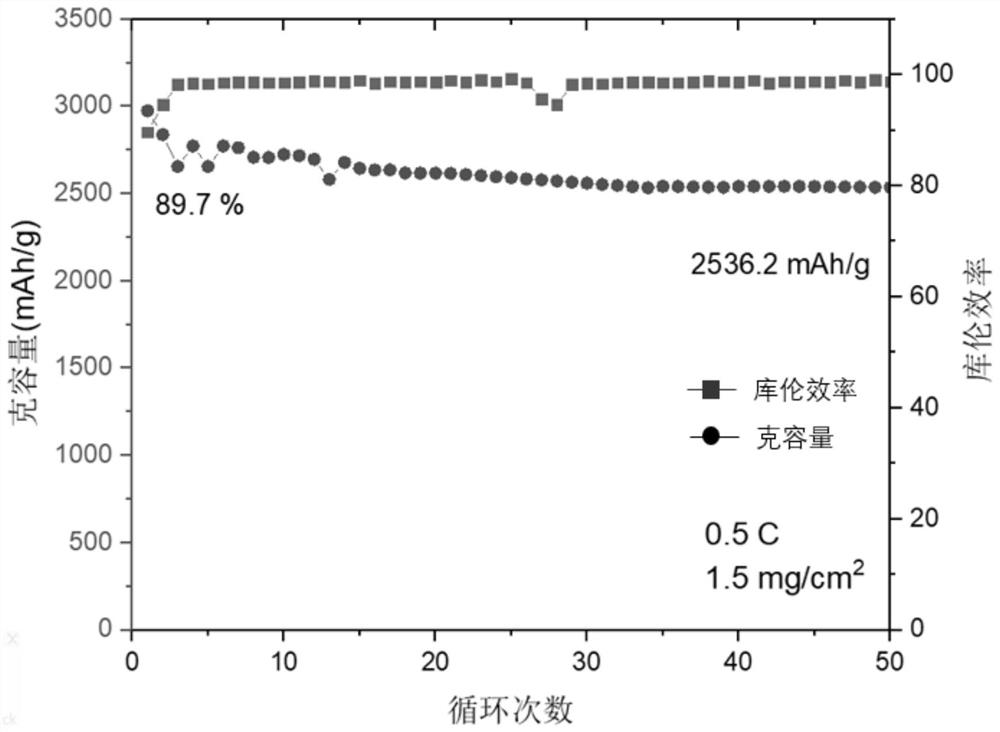A kind of conductive binder material and preparation method thereof, negative pole sheet and lithium ion battery
A technology of conductive binder and silicon-based negative electrode, which is applied in the direction of non-aqueous electrolyte battery electrodes, batteries, negative electrodes, etc., can solve the problems of bonding failure, easy pulverization, and poor conductivity of silicon-based materials, so as to alleviate pulverization Problems, high adhesion, reduced effect of use
- Summary
- Abstract
- Description
- Claims
- Application Information
AI Technical Summary
Problems solved by technology
Method used
Image
Examples
Embodiment 1
[0052] S1) Preparation of binder material A1:
[0053] Prepare 10ml of 5% polyvinyl alcohol aqueous solution, put the polyvinyl alcohol aqueous solution into a 50ml polytetrafluoroethylene-lined hydrothermal kettle, place the hydrothermal kettle in an oven at 160°C, take it out after 6h, and place it in the air for natural cooling , that is, to obtain the binder material, denoted as A1.
[0054] S2) making of pole piece N1:
[0055] Mix 1 mass part of A1 and 9 mass parts of active material nano-silicon with a mortar, add 0.2ml of deionized water to obtain negative electrode slurry, and coat the negative electrode slurry on copper foil. The solid coating quality is 1mg / cm 2 , and then dried in a vacuum oven at 100°C for 12 hours, cut into pieces, and weighed. The obtained pole piece is designated as N1.
[0056] S3) Preparation of lithium-ion half-cell C1:
[0057] The separator is a 25 μm polypropylene film;
[0058] The electrolyte is composed of non-aqueous organic solv...
Embodiment 2
[0061] S1) Preparation of binder material A2:
[0062] Prepare 10ml of 8% polyvinyl alcohol aqueous solution, put the polyvinyl alcohol aqueous solution into a 100ml polytetrafluoroethylene-lined hydrothermal kettle, place the hydrothermal kettle in an oven at 200°C, take it out after 24 hours, and place it in the air for natural cooling , that is, to obtain the binder material, denoted as A2.
[0063] S2) making of pole piece N2:
[0064] 1 mass part of A2 and 9 mass parts of active material nano-silicon were mixed evenly with a mortar, and 0.2ml deionized water was added to obtain the negative electrode slurry, which was coated on the copper foil, and the solid coating mass was 1mg / cm 2 , and then dried in a vacuum oven at 100°C for 12 hours, cut into pieces, weighed, and the obtained pole piece was recorded as N2.
[0065] S3) Preparation of lithium-ion half-cell C2:
[0066] The separator is a 25 μm polypropylene film;
[0067] The electrolyte is composed of non-aqueo...
Embodiment 3
[0070] S1) Preparation of binder material A3:
[0071] Prepare 50ml of 20% polyvinyl alcohol aqueous solution, put the polyvinyl alcohol aqueous solution into a 200ml polytetrafluoroethylene-lined hydrothermal kettle, place the hydrothermal kettle in an oven at 250°C, take it out after 12h, and place it in the air for natural cooling , that is, to obtain the binder material, denoted as A3.
[0072] S2) making of pole piece N3:
[0073] 1 mass part of A3 and 9 mass parts of active material nano-silicon were mixed evenly with a mortar, and 0.2ml deionized water was added to obtain the negative electrode slurry, which was coated on the copper foil, and the solid coating mass was 1mg / cm 2 , and then dried in a vacuum oven at 100°C for 12 hours, cut into pieces, and weighed. The obtained pole piece is designated as N3.
[0074] S3) Preparation of lithium-ion half-cell C3:
[0075] The separator is a 25 μm polypropylene film;
[0076] The electrolyte is composed of non-aqueous ...
PUM
| Property | Measurement | Unit |
|---|---|---|
| diameter | aaaaa | aaaaa |
| diameter | aaaaa | aaaaa |
| quality score | aaaaa | aaaaa |
Abstract
Description
Claims
Application Information
 Login to View More
Login to View More - R&D
- Intellectual Property
- Life Sciences
- Materials
- Tech Scout
- Unparalleled Data Quality
- Higher Quality Content
- 60% Fewer Hallucinations
Browse by: Latest US Patents, China's latest patents, Technical Efficacy Thesaurus, Application Domain, Technology Topic, Popular Technical Reports.
© 2025 PatSnap. All rights reserved.Legal|Privacy policy|Modern Slavery Act Transparency Statement|Sitemap|About US| Contact US: help@patsnap.com



